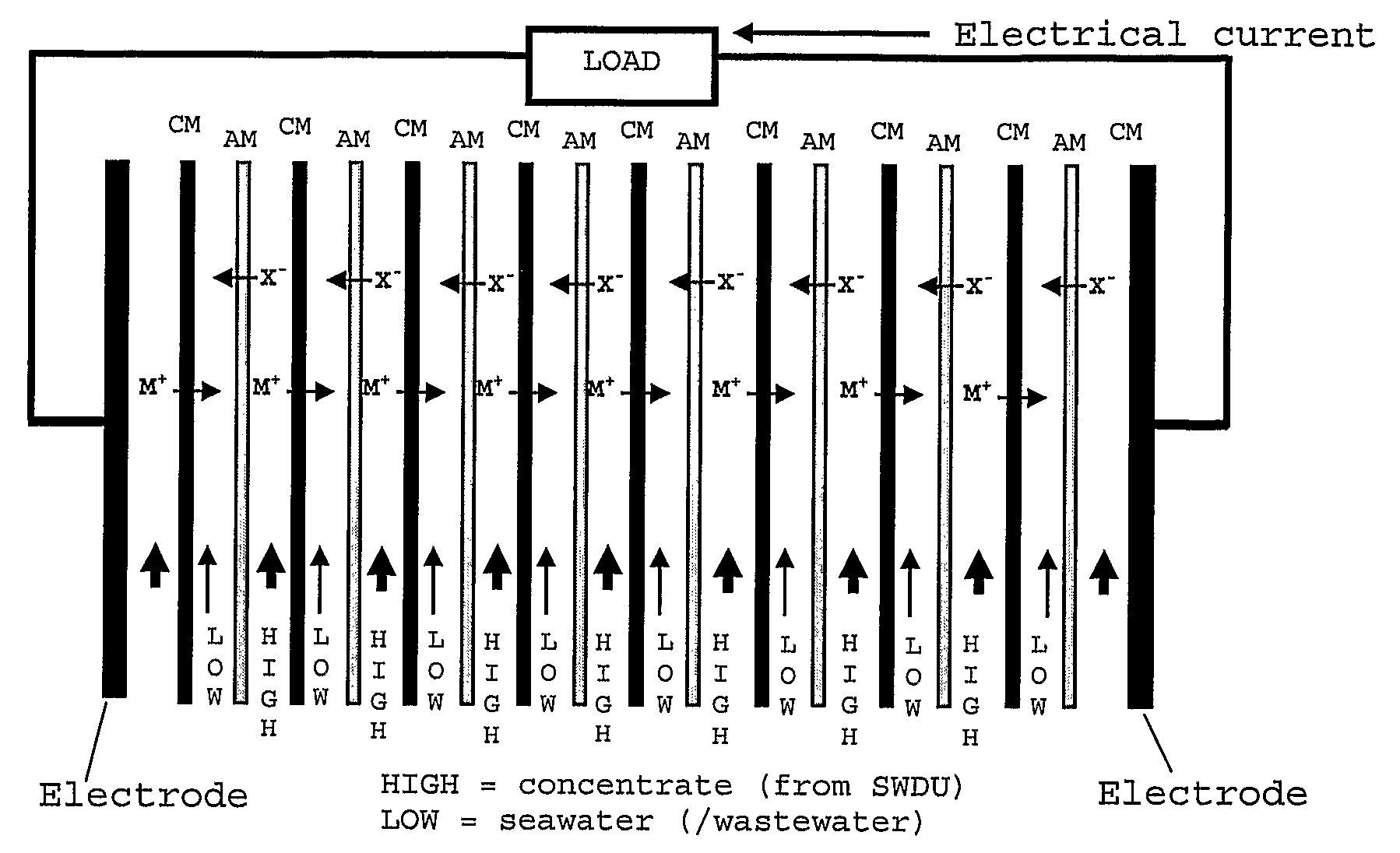Combination of a Desalination Plant and a Salinity Gradient Power Reverse Electrodialysis Plant and Use Thereof
a technology of reverse electrodialysis and salinity gradient, which is applied in the direction of fluid pressure measurement, liquid/fluent solid measurement, peptide measurement, etc., can solve the problems of not being economically viable, not very efficient and economic in practice, and the pump consumption is too much energy for the salinity gradient power system to be economically viable, etc., to achieve a small salinity gradient power unit and higher power output
- Summary
- Abstract
- Description
- Claims
- Application Information
AI Technical Summary
Benefits of technology
Problems solved by technology
Method used
Image
Examples
example
[0044]The SGP-RE unit consists of a set-up as used in electrodialysis (ED) but used in a reversed way. In such a set-up cation membranes (CM) and anion membranes (AM) are placed in an alternating sequence as indicated schematically in FIG. 1. Since the activity (concentration) of the salt ions in the SWDU concentrate (feed indicated as HIGH in the SGP-RE compartments) is much higher than the activity of the salt ions in the seawater (feed indicated as LOW in the SGP-RE compartments), there will be a diffusion of:[0045]cations from the SWDU concentrate (HIGH) compartments through the cation membranes into the seawater (LOW) compartments[0046]anions from the SWDU concentrate (HIGH) compartments through the anion membranes into the seawater (LOW) compartments
[0047]This diffusion of ions invokes an electrical voltage across the two SGP-RE electrodes and thus an electrical current through an electrical load. In FIG. 1 the electrode activity is not indicated. As with ED, the electrode ele...
PUM
| Property | Measurement | Unit |
|---|---|---|
| osmotic pressure | aaaaa | aaaaa |
| height | aaaaa | aaaaa |
| pressure | aaaaa | aaaaa |
Abstract
Description
Claims
Application Information
 Login to View More
Login to View More - R&D
- Intellectual Property
- Life Sciences
- Materials
- Tech Scout
- Unparalleled Data Quality
- Higher Quality Content
- 60% Fewer Hallucinations
Browse by: Latest US Patents, China's latest patents, Technical Efficacy Thesaurus, Application Domain, Technology Topic, Popular Technical Reports.
© 2025 PatSnap. All rights reserved.Legal|Privacy policy|Modern Slavery Act Transparency Statement|Sitemap|About US| Contact US: help@patsnap.com


